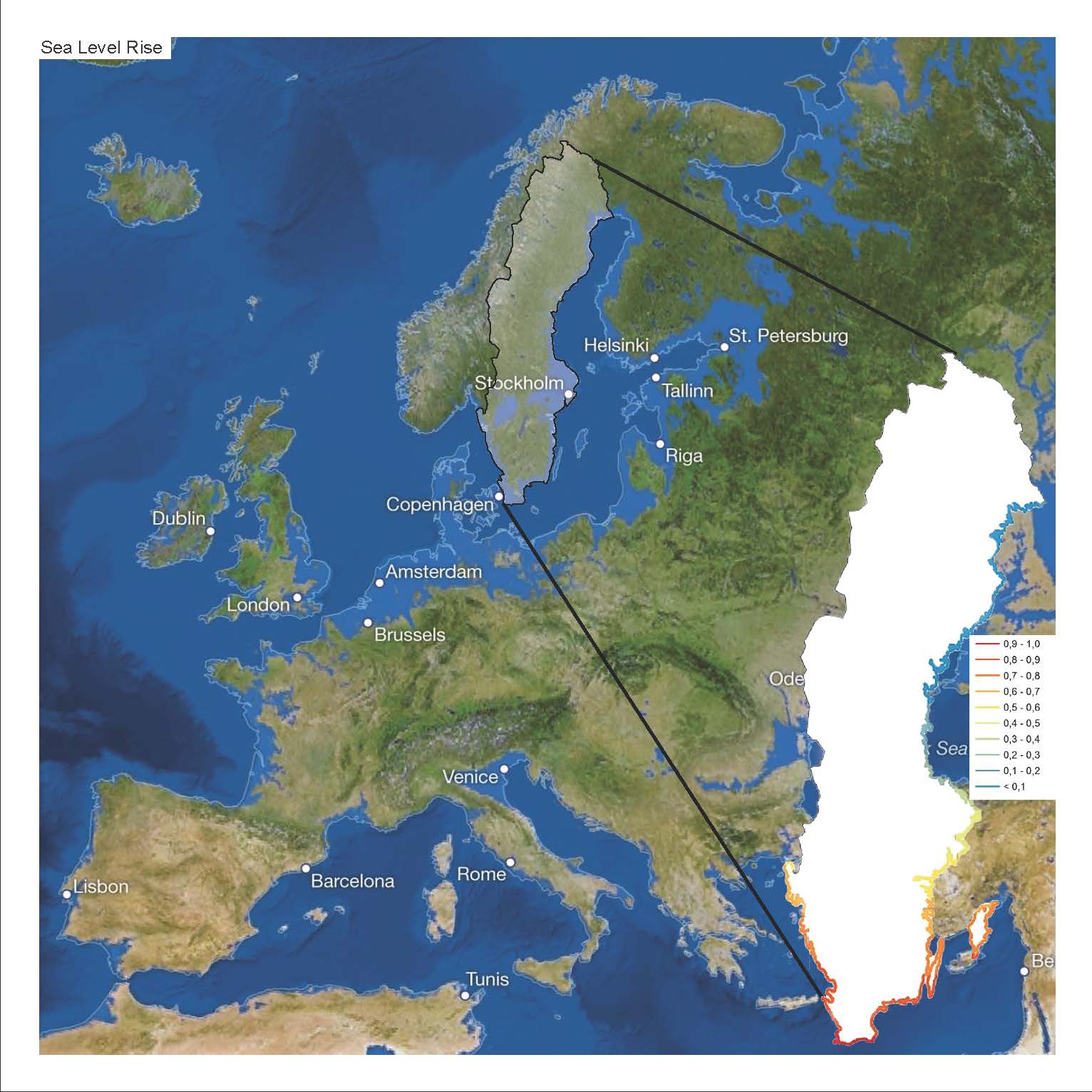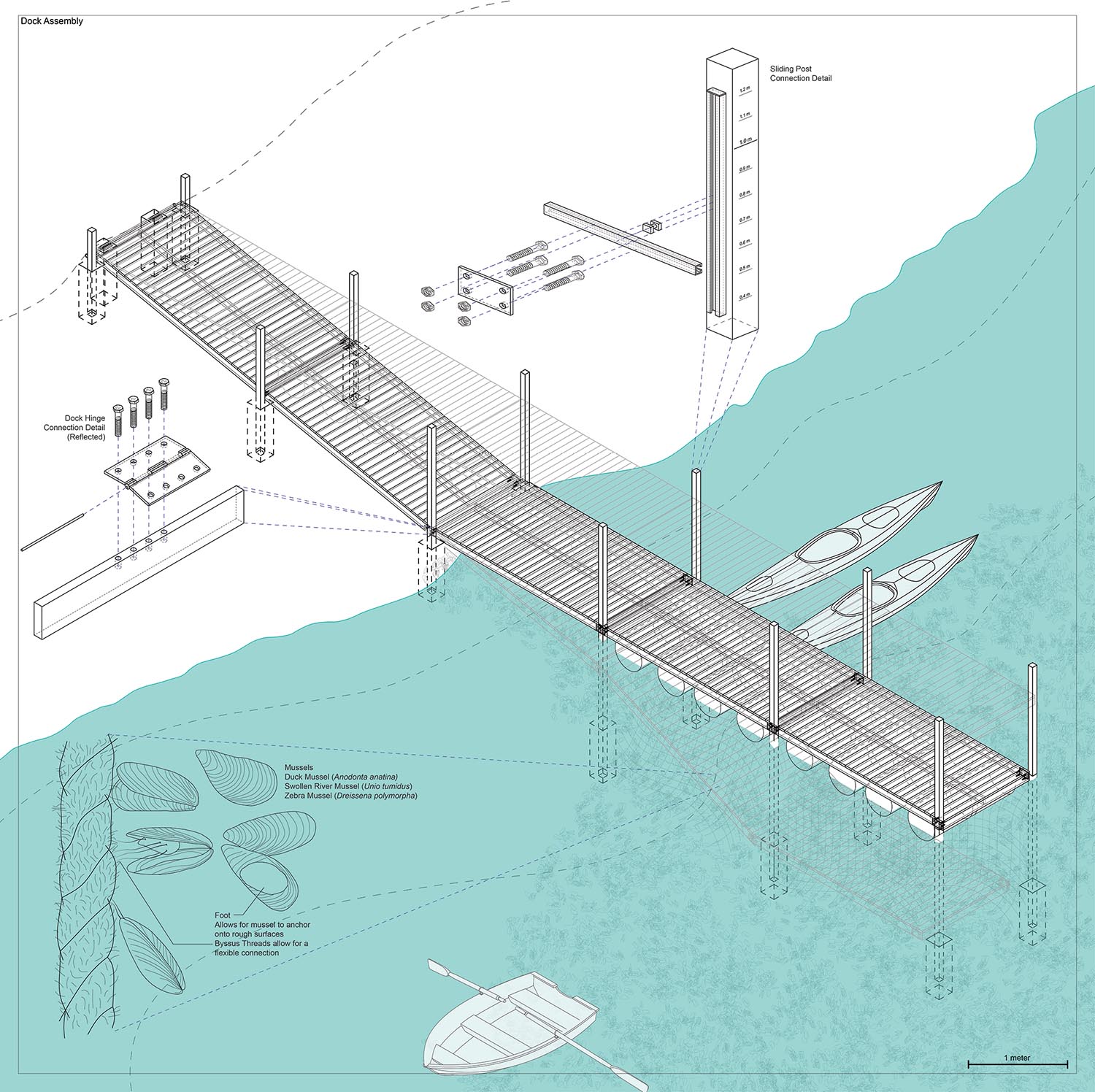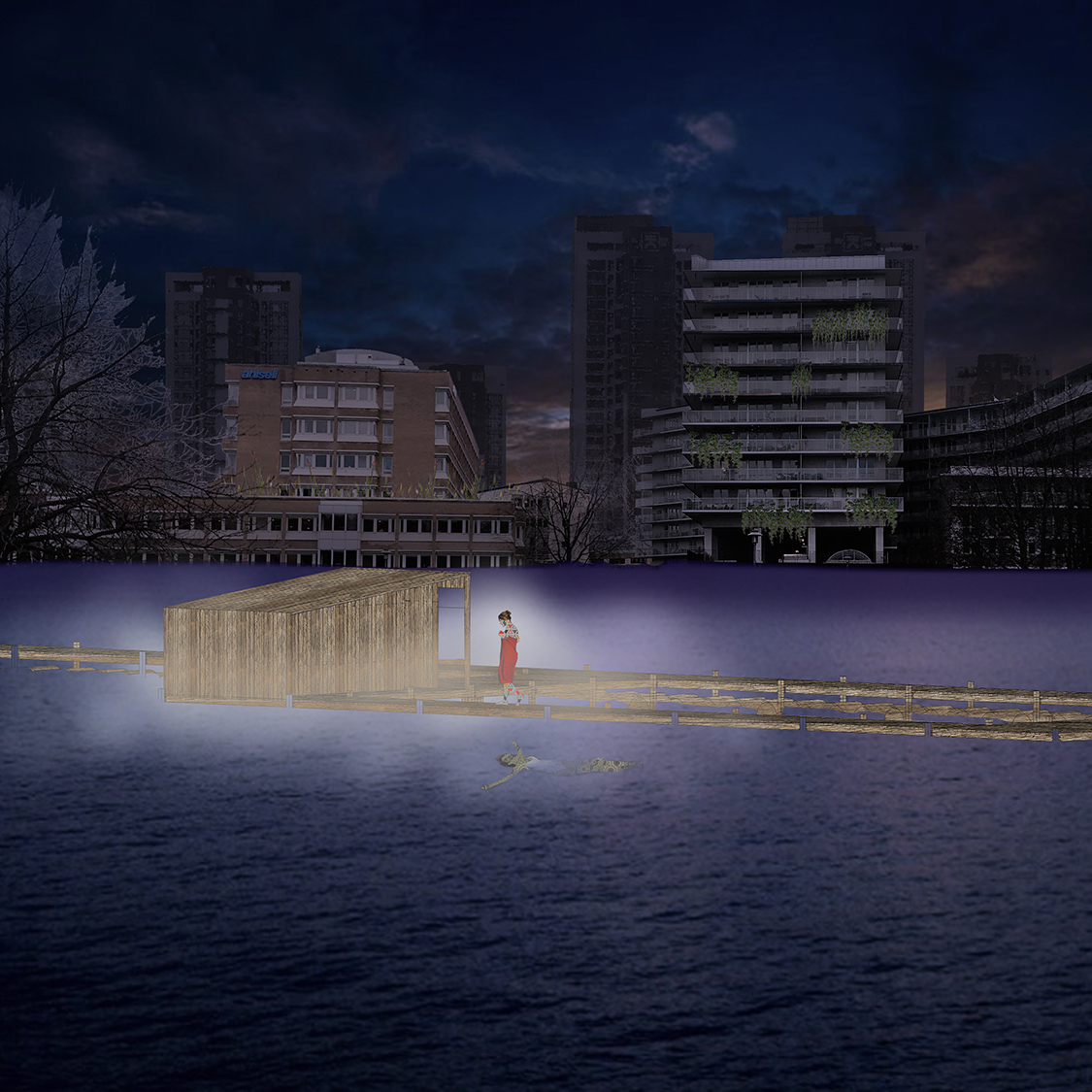docked dilemmas
KTH Royal Institute of Technology
Stockholm, Sweden
Profs. Helene Frichot, Sepideh Karami, & Adria Carbonell
Fall 2018
Stockholm is 30% water by area, but as seas rise, this number will increase. All aspects of shoreline life will need to shift, including the cities many recreational docks. This project proposes a simple solution - new connection details that integrate marine life to create a dynamic infrastructure that responds at the speed of the shifting tides.




Sliding mechanical connections will allow each walkway unit of the dock to respond individually to changing water level. Underneath, fuzzy marine ropes provide space for mussel reefs to grow, acting as a glue that holds the dock steady while allowing slow growth over the years. Mussels break wave action, creating new protection for the docks in the face of increasing storms driven by climate change. The mussels also act as a first wave of aquatic habitants as the ground transitions from dry to wet, drawing in other species over time.



As Matthew Gandy observes, cities are the result of a series of processes played out in a specific geography. Stockholm is no different - the amazing boating culture, supported by docks, would not exist anywhere else. This can continue in the face of future climate shifts, but first, the process must shift as the geography does. This change provides new opportunities to tweak the current process to promote a healthier, more inclusive (for both human and non-humans) urban life.
Today
No Action
Rethinking our Shorelines











